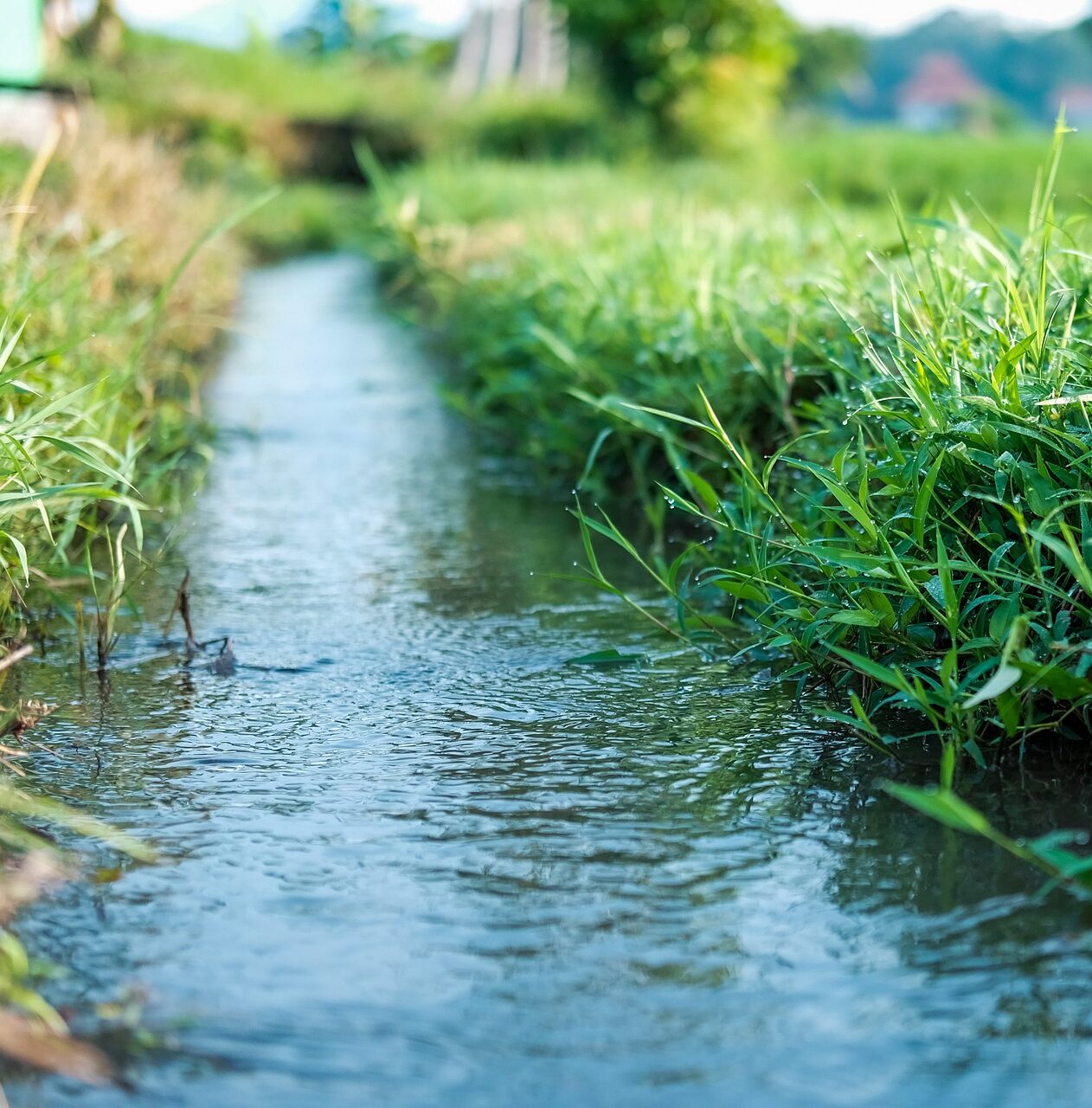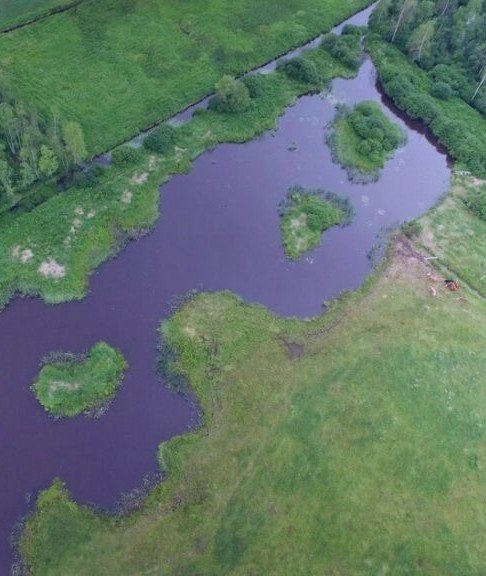
Practices for sustainable
Controlling water movement prevents
runoff and keeps nutrients in place
Excess water in agricultural areas raises the risk of nutrient runoff, while water shortage can have a devastating effect on crop yields. Employing practices that control water movement can help retain water and capture nutrients, forming areas for flood water and storage for irrigation. These practices also support climate adaptation by preventing large fluctuations between water excess and dry periods.
Sustainable water management is a balancing act
When it comes to water in agriculture, both too much and too little is undesirable. Too much water in agricultural areas can affect how the soil functions, hinder plant growth, and increase the risk of nutrient runoff. Too little water, on the other hand, can have devastating effects on crops and their ability to take up nutrients from the soil.
Nutrient loading from agriculture is tied to the movement of water. Nutrients either run off from fields along the surface during rain and snowmelt or they leach through the surface— in some cases, even reaching the groundwater. Maintaining healthy soil and controlling erosion are key solutions, but controlling water movement and the amount of water in agricultural areas can also do a lot to help retain water and nutrients.
The objectives of water management practices are diverse. Practices include leading excess water away from fields, slowing down water flow with natural stream beds, forming buffer areas for flood water, and storing water for irrigation contributing to water protection in several ways. By ensuring the correct amount of water on the fields, water management helps to achieve good yields, which also contributes to good nutrient balances. Furthermore, these practices support climate adaptation by preventing large fluctuations between water excess and dry periods.

Measures for
sustainable water management

Construct wetlands
Wetlands are natural treasure troves, with abundant flora that provides food and habitat for many species. They also absorb nutrients like a sponge, which helps combat eutrophication.
In agricultural landscapes, constructed wetlands can be used to retain the nutrients contained in the runoff water from fields. Wetlands slow down the incoming water, which induces settling and the deposition of suspended particles. Plants and microbes break down, assimilate and cycle nutrients and organic matter in the wetland. Wetland soil may also chemically bind phosphorus.
How efficient a constructed wetland is when it comes to water protection very much depends on how long water resides in the wetland, and whether it is large enough in relation to its catchment. Wetlands may need between five to ten years to reach their full nutrient retention capacity and require management to remain effective. Management includes cutting and removing vegetation, removing sediment, and maintaining the constructed structures when needed.
In addition to slowing down water flow and absorbing nutrients, wetlands play an important role in storing water and preventing flooding during heavy rains. They also provide extensive biodiversity benefits such as breeding habitats for birds.
FARM STORY: THE EXPERIMENTAL FARM THAT PIONEERED ONE OF DENMARK’S FIRST CONSTRUCTED WETLANDS
Manage water
Effective water management helps ensure good yields, nutrient balance, and water protection. Measures such as controlled subsurface drainage, two-stage ditches, flood meadows, natural stream beds, and irrigation water storage help solids settle on the banks of ditches or streams and slow down water flow during high peaks. They also help create space for water, which prevents over-flooding and increases availability during dry periods. Vegetation further enhances this effect while also reducing erosion along banks.
With controlled subsurface drainage, it is possible to regulate the groundwater level in a field using special regulating wells. When the need for drainage is small, the water level can be kept higher. This improves plants’ access to water, as well as their ability to absorb nutrients. This means that less water flows out of the ground and, thus, the leakage of nitrogen transported by water is reduced.
Two-stage ditches have been modified through the addition of floodplain benches. They act like natural floodplain zones and slow down water flow at high peaks by allowing the water to spread out. The channel becomes more stable, and there is less erosion. Natural stream beds are meandering, and have natural areas that contain flooding, important to biodiversity.
FARM STORY: INNOVATING WITH A TWO-STAGE DITCH TO PREVENT EROSION AND CONTROL WATER LEVELS

Last modified 13/01/22
